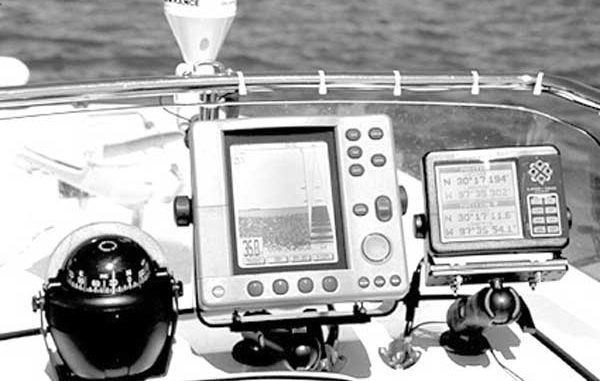
The action on spottails in the Biloxi Marsh is unbeatable for anglers carrying long rods.
Is that a fish on your screen or the shadow of a scratch on its lens?
When interpreting fine detail on your fish finder or GPS unit, you need the best screen visibility possible. Here are six tips to keep a clean screen.
1) Remove and stow your electronics when trailering. Leaving them mounted makes them vulnerable to flying stones and other missiles kicked up by tires as well as low-hanging limbs at campgrounds and along launch ramp access roads.
If removal isn’t practical, consider covering their screens with bubble wrap or sheets of impact-resistant closed cell foam anchored in place with a few rubber bands.
2) Don’t let anything spill, leak or spray onto LCD screens. Most units have a clear lens protecting their LCD that is made of some type of plastic. Sunscreen, bug repellent, liquid lure scents, reel oil and some anti-corrosion sprays used to clean the pins and sockets in the plugs and receptacles on the back of the unit can stain that lens permanently.
3) Remember that these screens are plastic, not glass, when you clean them. Some cleaners designed for glass will stain, frost or otherwise reduce the optical quality of the screen’s transparent lens. Use only those cleaners recommended for clear plastic, and never use anything containing an abrasive. If you aren’t sure about a cleaner, don’t use it.
4) Never wipe a screen with a dry cloth. Windblown dust and grit, and road dirt from not following tip No. 1, should be removed carefully with a soft clean cloth kept dripping wet.
Wiping the screen with a dry rag is like wiping it with sandpaper, and permanent scuffing is the most likely result.
5) Use a plastic cleaner to remove scratches and scuffs from a screens’ protective lens. When it’s too late for tip No. 4, the best method I’ve found to correct the damage is to clean the screen thoroughly with a mild soap solution or a plastic cleaner and then polish the scuffs and scratches out with Meguiar’s Mirror Glaze Plastic Polish #17.
My most successful technique is to keep a clean, soft cloth wet with the product and move it in circular polishing motions that cover about half the screen. Polishing a wide area instead of just the scratch preserves the optical quality of the lens.
Add more polish as necessary to keep the cloth wet and rotate the cloth often to keep a fresh part of it in use.
Every 30 minutes or so stop and wipe the screen dry with another clean soft cloth, and check your progress. The polish doesn’t turn white, so don’t leave it on the screen long enough to dry. This process can take hours if the damage is severe, so I usually do it while watching TV.
Small scratches and scuffs will be completely removed and the polish will round the edges of deep scratches enough to make them almost invisible.
6) Use a plastic polish to prevent scratches. Meguiar’s Mirror Glaze Clear Plastic Polish #10 puts a smooth, transparent protective coating on your screen lens that prevents most dirt and grit from sticking to it and lessens the abrasive damage when it does stick. It can be applied to a clean, new screen or one just returned to new condition with No. 5 to help prevent future damage.


